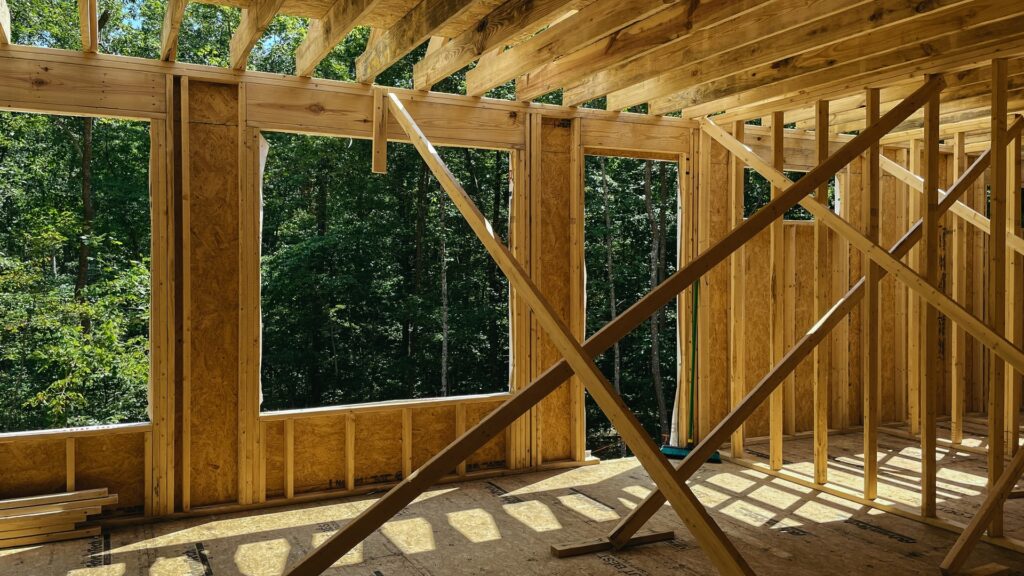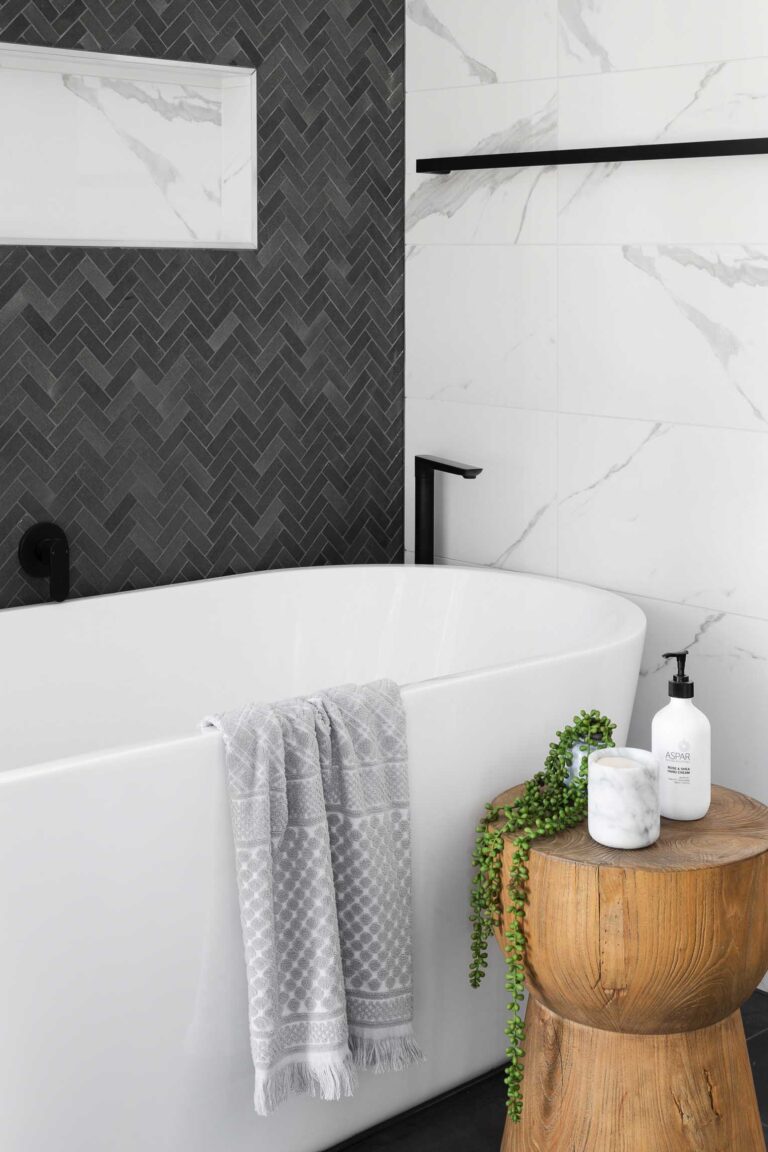9 Stages of New Home Construction

Are you currently building a home or thinking about building one in the future? Don’t let the process surprise you. Here are the 9 Stages of New Home Construction to know about before starting your project!
So you’ve chosen your builder, have a home style in mind, and picked out your lot. Now what? Being prepared for the different stages of home building is essential for having the right expectations and planning out the work involved!
In This Article
How Long Does it Take to Build a Custom Home?
Before getting started with home building, it’s important to know your timeframe. So how long does it take to build a custom home? Depending on the size of the home and the builder, it takes about 8 months to 2 years to build a home!

9 Stages of New Home Construction
1. Pre-Planning Meetings
The first step to building a new construction home is planning and design. Whether you’re building a home with a builder or building it yourself, you’ll definitely want to set aside some time for 2-3 pre-planning meetings. Here’s what you’ll need to plan out:
- Architectural Design/Drawings
- Interior Design & Planning
- Concrete/Exterior Planning
- Landscaping
While plans often change throughout the process, it’s best to start with as detailed of a design as possible. It also takes a while for certain items to ship (such as windows), and it’s best to order these things early so that the project isn’t delayed!
2. Foundation
Once the plans, contracts, and paperwork are finalized, it’s time to get started on the foundation. Depending on the type of foundation, this typically includes laying footings and pouring the concrete slab. If a crawl space or full basement is required, these are also accounted for during the foundation phase. Rough plumbing that goes underneath the foundation and sewer lines will also be installed.
3. Framing/Windows/Doors
The next step is to begin framing! This stage of new home construction can move pretty quickly. The first floor will be framed first, then the second floor. Windows and doors will also be framed out, and exterior walls, sheathing, and house wrap are also often placed during this phase.
Towards the end of framing, windows and interior doors will also be installed, if available. Additionally, the roof system and drains will also go in or be planned for.
RELATED: Basic Construction Framing 101

4. Electrical/Plumbing/HVAC
The next stage is to implement electrical, plumbing, and HVAC. Toilets are often installed during this phase, and faucets/sinks are planned for. Pipes, ventilation, and air conditioning and heating ductwork should also be planned out, especially when it comes to the attic space!
An electrical walk with the electrician will be necessary to determine where you will want fixtures, any extra outlets, switches, and other planning such as landscape lighting, cabinet lighting, floor outlets in the living room, TV outlets and cables, where the electrical panel will go, and more.
This step can come quickly and early on in the building process, so it’s important to think about the type of appliances you will have and where you will want them to plan for electrical and plumbing!
RELATED: Plumbing Basics for New Construction
5. Drywall/Trim
Interior walls, drywall, foam or fiberglass insulation, vents, and trim are one of the stages of new home construction that really start making the project come to life and feel like a home! A trim walk with the carpenter will be necessary to plan out all interior trim, such as baseboards, window trim, door trim, crown molding, beams, and any built-ins such as closet shelving and closet dressers.
6. Brick/Paint
Brick (or other exterior finishes, such as stucco) will be finalized during this phase. Then comes the fun part – choosing paint and stain colors! The painter will need all of your paint colors in order to plan and purchase what they need, so it’s important to plan out every single paint or stain color in your home. A primer coat will be applied first, then the final coats!

7. Concrete/Flooring/Tile
Next up, interior flooring (wood floors and/or carpet) and tile are installed. It’s important to note that carpet is sometimes left as a last step to keep it from getting dirty in the building process!
Exterior concrete will also be poured during this time. It’s helpful to have a concrete walk and plan out things like driveways, patios, pool areas, steps, and walkways.
8. Countertops/Appliances
As the new construction home nears the end of the project, countertops and appliances will be installed.
9. Hardware/Interior Finishes/Landscaping
One of the final stages of new home construction is interior finishes. This includes hardware, glass, plumbing fixtures, lighting fixtures, doorknobs, an alarm system, and many other things. Landscaping is also often included in this stage, so it’s essential to be thinking about any landscape design you may want to include!
Last but not least, the final inspection for compliance and final walkthrough will be required before moving into your new construction home. Once the building codes and inspection is passed, the certificate of occupancy is issued and it’s time to finally move into your dream home. The new home construction process isn’t for the faint of heart, but it’s so worth it for creating the home you’ve always wanted!
RESOURCE: The Complete Visual Guide to Building a House






